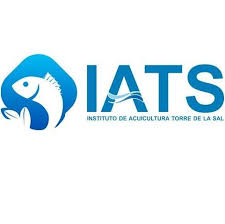Banco de quistes de Artemia
-
Code
IATS -
Registration date
28/08/2007 -
Update date
21/04/2021 - Download the sheet
Description
The collection is composed of Artemia cysts and eggs (Crustacea, Branchiopoda, Anostraca). These cysts are suspended embryos (gastrulae), laid by female Artemia on unfavourable environmental circumstances; they are covered by a lipoproteic corion which protects the embyos and contributes to the bloom of nauplii larvae. They are dehydrated by drying or high saline solutions. This collection started around 1984-1985.Overall information
Strengths
Las líneas prioritarias de investigación son:
1) Elaboración de estudios sobre distribución geográfica (biodiversidad) de las especies del género Artemia en todo el orbe.
2) Caracterización biométrica y morfométrica de estas especies. Elaboración de una base de datos.
3) Aplicación a diversos estudios genéticos, evolutivos, de fitness y competencia entre especies.
4) Estudios sobre la incidencia en especies autóctonas por parte de especies exóticas invasoras.
5) Clasificación de las especies a partir del contenido lipídico y perfil en ácidos grasos de quistes y nauplios. Aplicación en larvicultura de especies marinas.
Common names
Arthropods, crustaceans (Artemia).
Geospatial coverage
Africa, America, Asia and Europe.
Datasets of the collection/database
Types of objects
Huevos de duración, quistes, organismos en diapausa.
Types of datasets
Observaciones de campo y muestras de organismos preservados.
Conservation method
Deshidratados.
Digitalization
6
100
93
No
Map of Specimens
Related Resources
Publications
- Marine Ecology Progress Series, 13 (1983): 291-293.
- Aquaculture Engineering, 8 (1989): (127-138).
- Marine Biology, 111 (1991): 461-465.
- Hidrobiología, 212 (1991): 181-185.
- Journal of Plankton Research, 14(1992): 949-959.
- Journal of Plankton Research, 14(1992): 1461-1471.
- Journal of Experimental Marine Biology and Ecology, 155 (1992): 123-131.
- Aquaculture, 102 (1992): 219-230.
- Archivium Protistenkunde, 144 (1994): 83-89.
- Journal of Molecular Evolution, 38 (1994): 156-168.
- International Journal of Salt Lake Research, 3(1995): 175-190.
- Aquaculture, 142 (1996): 171-189.
- International Journal of Salt Lake Research, 4(1996): 327-333.
- Journal of Environmental Science and Health, B32 (1997): 363-375.
- Comparative Biochemistry and Physiology, 120 (1998): 385-390.
- Bull. of Environmental Contamination and Toxicology, 61 (1998): 778-785.
- International Jorunal of Salt Lake Research, 8 (1999): 23-40.
- Parasitology Research, 86(2000): 772-774.
- Hereditas, 133 (2000): 159-166.
- Chemosphere, 48 (2002): 563-569.
- Environmental Toxicolicology Chememistry, 21 (2002): 437-444.
- Journal of Biogeography, 31 (2004): 1735-1749.
- Biological Invasions, 7 (2005): 37-47.
- Limnology and Oceanography, 50 (2005): 737-742.
- Journal of Plankton Research, 27 (2005): 895-907.
- International Review of Hydrobiology, 91 (2006): 539-554.
- Marine Ecology Progress Series, 335 (2006): 155-165.
- Hydrobiologia, 579 (2007): 41-53.
- Limnetica, 26 (2007): 387-404.
- Journal of Experimental Marine Biology and Ecology. 354 (2008): 9-16.
- Molecular Ecology, 17 (2008): 3160-3177.
- Hydrobiologia, 610 (2008): 223-234.
- Molecular Ecology Resources, 9 (2009): 547-550.
- International Review of Hydrobiology, 94 (2009): 560-579.
- PloS ONE 5(2010): e11932.
- Parasitology Research, 108 (2011): 905-912.
- Crustaceana, 84 (2011): 1025-1039.
- Biological Invasions, 14 (2012):1819-1829.
- Aquatic Biosystems, 8 (2012): 25.
- Journal of Experimental Marine Biology and Ecology, 440 (2013): 81-89.
- Journal of Evolutionary Biology, 26 (2013): 1934-1948.
- PloS ONE, 8 (2013): e83348.
- Estuarine, Coastal and Shelf Science, 145 (2014): 1-8.
- PeerJ, 2 (2014): e439.
- Aquatic Toxicology, 161 (2015): 208-220.
- Differentiation in Artemia strains from Spain: 19-39. In: The brine shrimp Artemia. Vol. 1. Universa Press, Wetteren, Bélgica. 345 pp. 1980.
- Preliminary nutritional evaluation of different Artemia nauplii as food for marine fish and prawn larvae: 425 436. In: Artemia Research and its Applications. Vol. 3. Universa Press, Wetteren, Bélgica. 556 pp. 1987.
- Bioecologia de Artemia (Crustacea, Branchiopoda) en la laguna de La Mata. 1991. Publicaciones del Instituto de Cultura "Juan Gil Albert", Diputación de Alicante. 176 pp.

